After navigating the winding Ruamjai Cement Thai Banpu Road, admiring the clouds and enormous and little ridges, we finally arrived at our destination: “Mae Tan mine,” a primary source of lignite and ball clay in Thailand.
Not only are the skies clear and the vast geological areas welcoming visitors, but this mine is also exceptionally special because it is the second largest in Lampang Province and one of the most diverse ball clay mines in the country. It is spread out over a total area of 5,856 rai, from Sandonkaew Subdistrict, Mae Tha District, to Samai Subdistrict, and Mae Kua Subdistrict, Sopprap District, Lampang Province.
For more than three decades, the Mae Tan Mine had enjoyed a glorious past, supplying lignite and ball clay for the country and creating jobs in local areas. Currently, the mine has ended its coal-drilling operations. It has shifted its focus to actively restoring forest areas and serving as a model for using mine water to help alleviate drought in the surrounding villages. This is done in an effort to bring the area’s benefits and values back into the lives of those living close to the mine in a sustainable manner.
Since the first day the mine was built, it has become an integral part of the community and a crucial future water source. SCG Cement Company Limited’s journey has come a long way because of the dedication of its team and the intriguing idea that seeks to unite the hearts of many different groups of people, spanning the government sector, businesses, and local communities, for the greatest good of the people. Let’s find out what answers are being given to the community simultaneously about sustainability.
“The mine must coexist with the local community: the Mae Tan mine management concept where a wide range of people collaborate to attain the same goal.
SCG started mining operations in the Mae Tan mine in 1983 with efforts to limit any adverse effects on the environment and the surrounding community. Some of these efforts include not using explosives for safety and environmental reasons and creating buffer zones to help prevent and lessen the effects of dust, noise, and vibration.
“The mine must coexist with the community, and the mine must not cause problems for the community. And we must help the community and find a solution that benefits all parties,” said Tianchai Srinak, manager of Mae Tan mine, echoing the mining management concept that takes into account all stakeholders, particularly the communities surrounding the mine, from employment to income generation to enhancing the quality of life through community promotion projects in various fields.
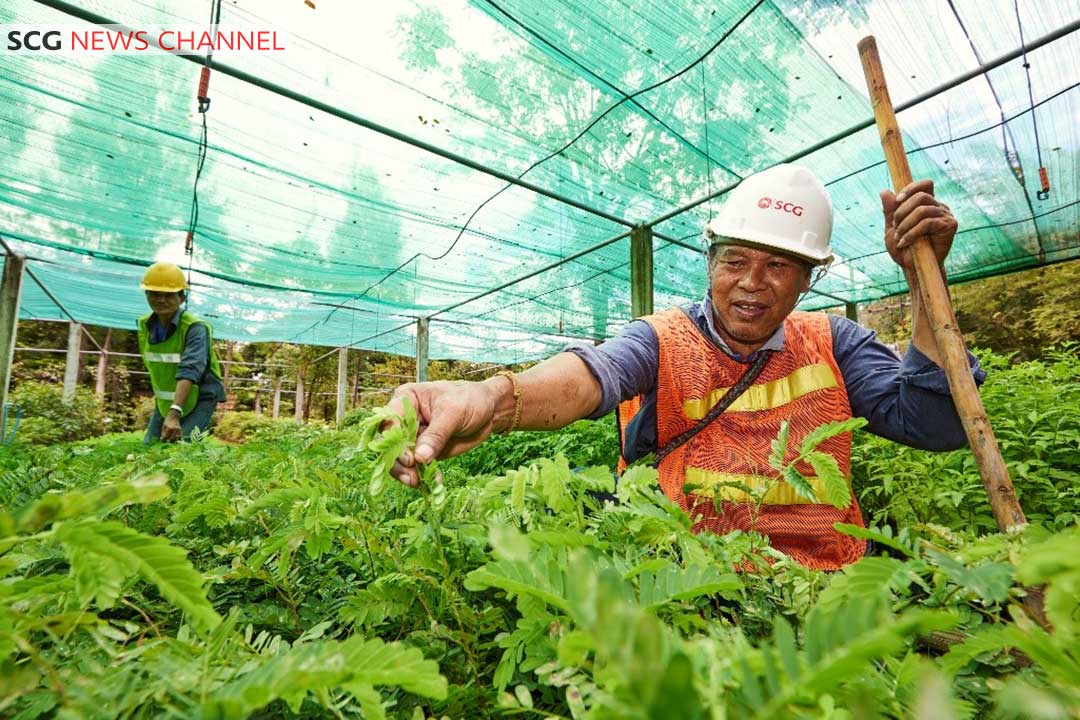
Suk Ngaosri, or Pan, a 58-year-old SCG contract worker in the Mae Tan mine, is another example of Mae Tan community villagers who had benefited from job creation from the Mae Tan and to live a better life and become self-reliant.
“I have never had a job outside of my community, and I have always been working in the Mae Tan mine. It’s been around 20 years since the early days. Being a daily wager was really struggling, but once I started working in the mine, I was able to make significantly more money. It feels much better now. Working here is like working with family. SCG would always look for workers in the Mae Tan community,” Pan highlighted his improved quality of life.
SCG’s effort extends beyond the profit figures in financial statements to include the smiling faces of the locals surrounding the mine. Over the years, SCG has worked with local leaders to support community initiatives like career development, the creation of community enterprises to help villagers become self-sufficient, the sponsorship of religious activities, and the promotion and development of education programs to support initiatives for the well-being of community members.
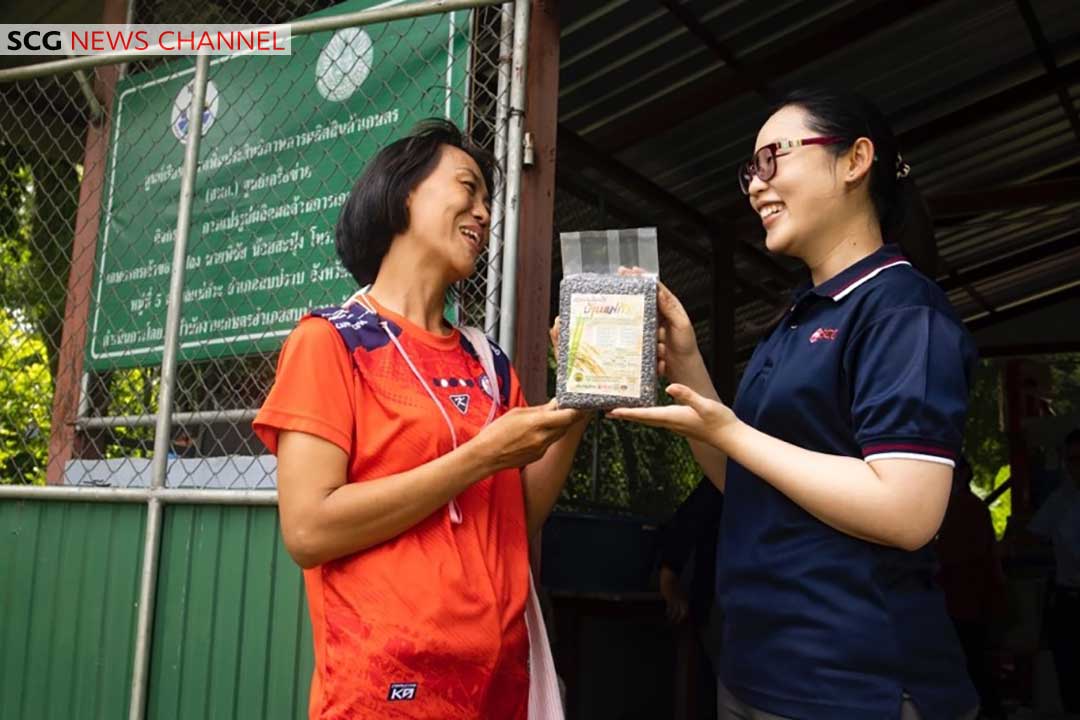
“SCG will always support any Baworn activities or activities relating to Home, Temple, or School in the Sandonkeaw subdistrict. For the home aspect, it helps with job creation. For the temple aspect, it supports financing when there are religious rituals. For the school aspect, SCG also provides scholarships to students in communities. In addition to recognizing the significance of community health, SCG annually supports volunteer mobile medical units serving residents. SCG also helped restore upstream forest areas and encouraged locals to build check dams and grow trees,” said Sawang Theptao, Mayor of Siriraj District Municipality, pointing to SCG’s close engagement with the community in many dimensions.
The strong relationship between SCG and the surrounding community is so profound that SCG is a part of the community. In terms of business, though, a wind of change swept through the mine. SCG has no longer engaged in mining operations since 2019; instead, it focuses on activities in the mine’s environs. Examples include selling industrial soils such as ball clay, which is the main raw material in the ceramics industry (e.g., plates, bowls, tiles, sanitary ware, etc.) on both domestic and international markets. This included removing the lignite-and-soil mixture, which was historically considered a layer of waste soil, to maximize the benefits under the “Zero Waste” concept. The low-heat soil lignite is washed thoroughly into lignite with a higher calorific value, and that lignite is delivered to cement plants within the SCG Group.
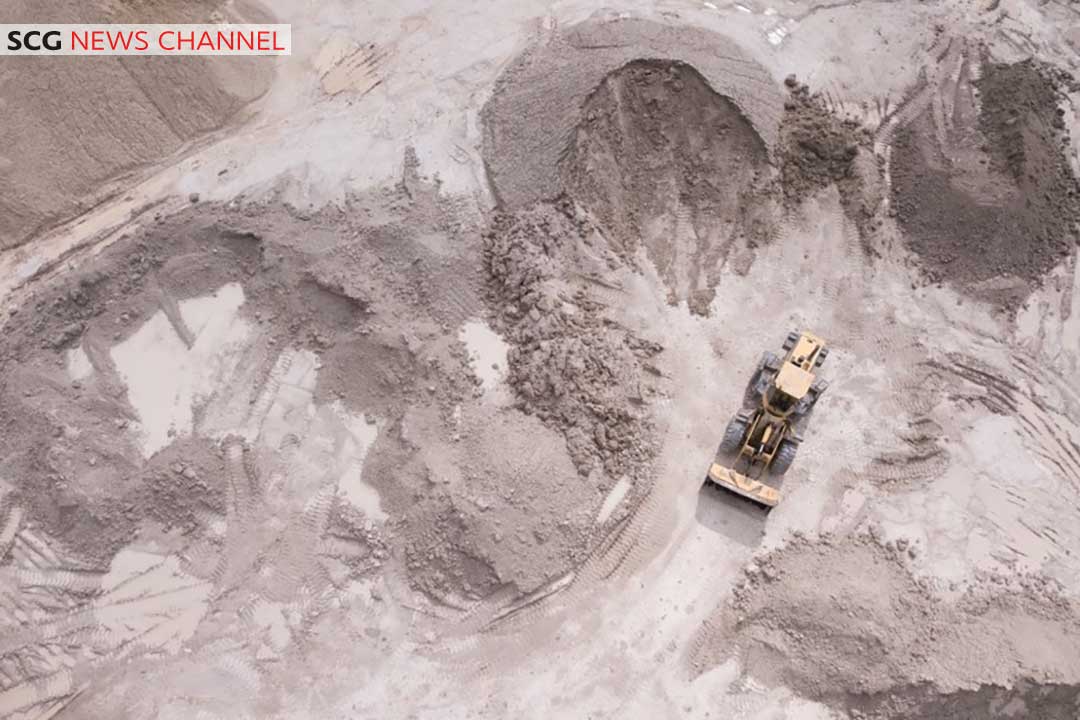
The Mae Tan mine is undergoing a full mine restoration process under the ESG 4 Plus development framework, which recognizes the importance of the environment, society, and governance. People and relevant government agencies have been invited to participate in designing the future sustainability of the Mae Tan mine.
Integrate technology and community power to sustainably restore forests, protect ecosystems within the mine, and foster engagement.
Mine restoration is a time-consuming and arduous endeavor. Increasing green space is the first step in the restoration process since it helps to create a complete environmental “ecosystem” with an emphasis on biodiversity.
SCG has teamed with the Forest Restoration Research Unit, Faculty of Science, Chiang Mai University (FORRU) to study biodiversity and native plant species in mine restoration work. The collaborative effort restores the mine with “structural vegetation” by planting native, fast-growing plants to cover the soil and climax species in the same area to expedite the process of restoring the ecosystem to its former glory.
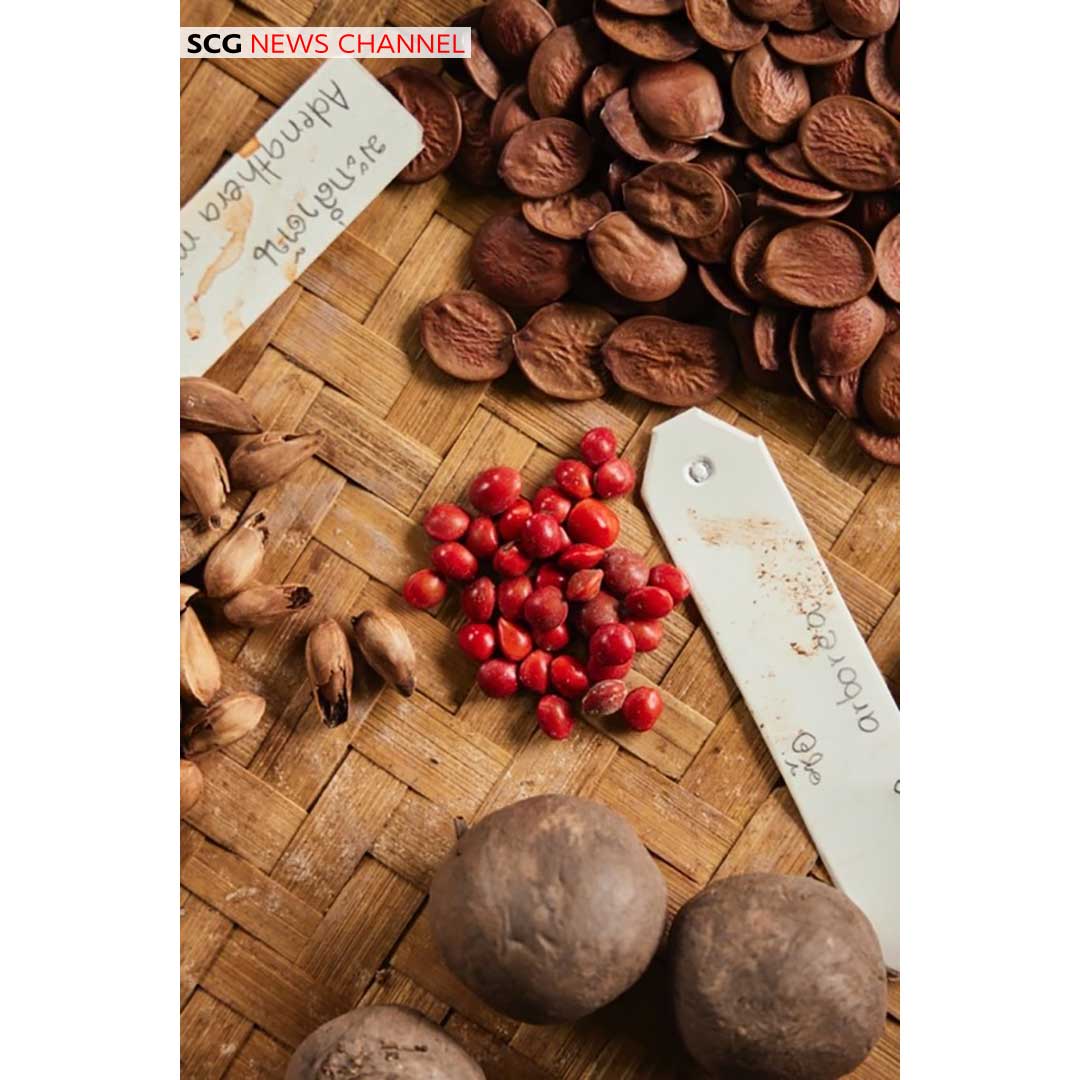
In addition, Mae Tan mine uses technology to aid in the smart rehabilitation effort, including the usage of the smart nursery, a technique for controlling the seedling watering system within the nursery, where the water springer can be controlled via mobile application. In the seedling plots, a sensor system is implemented to collect soil moisture data to water the seedlings based on the needs of each plant species in the seedling nursery inside the mine. Currently, research is underway to use drones to launch seed balls in inaccessible sloped areas, where seeds are encased in clay and fertilizer containing plant-growing nutrients. The seed balls are also colored so that future drone photographs can be used for follow-up.
Aside from working hard to revitalize through state-of-the-art technology, SCG also works on fostering a sense of shared ownership between the organization and surrounding communities. As a result, the Creating Shared Value (CSV) was introduced as a guideline whereby local villagers are hired to replant forests and restore mines in addition to providing knowledge and promoting seedling cultivation to schools in the vicinity of the mine, namely Ban Ao Witthaya School and Mae Tha Pattana Suksa Elementary School. SCG also purchased seedlings from the children for mine restoration work, encouraging the youth in the community to become conscious of environmental responsibility and participate in the restoration of their homeland forests. This entails purchasing composed fertilizer from the Ban Mae Gua community enterprise, which produces such fertilizer to generate income for the community and utilizing organic fertilizers in mine restoration efforts.
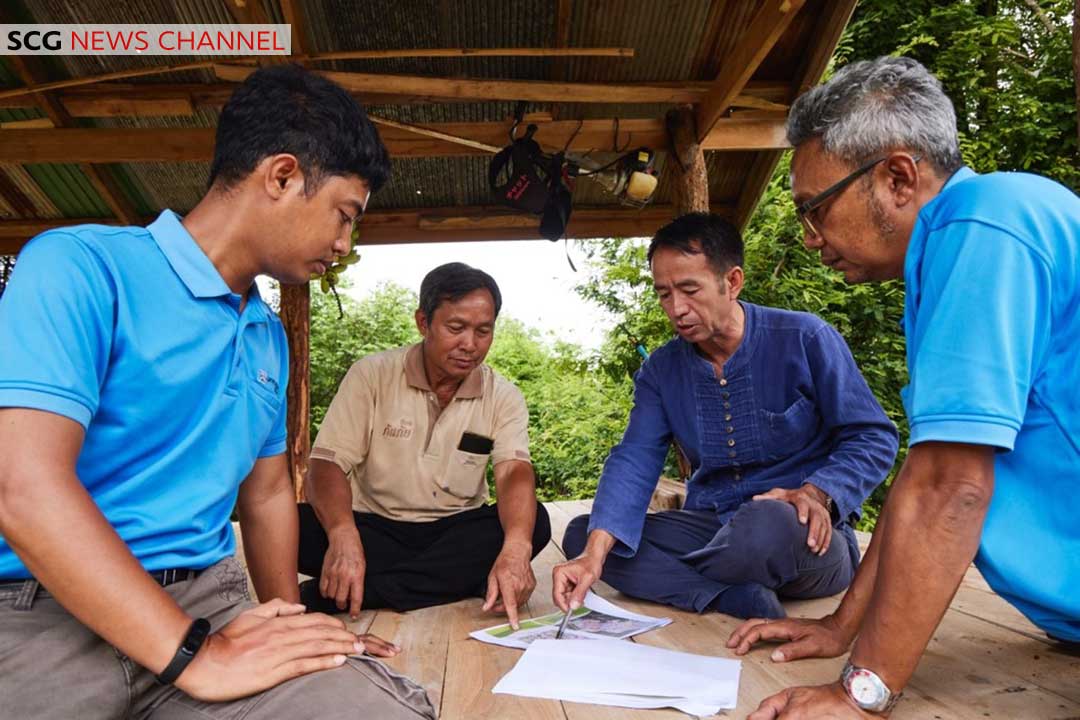
“SCG purchased composed fertilizers from us, which is a low-cost, high-quality fertilizer. If mixed with tree-planting soil, the tree will flourish. They purchased 20 tons, but we gave them additionally for free (laugh) because SCG would use it to revive the soil and forest. As a result, the environment further upstream is restored. And in the end, its fruitful result will fall on our community,” Pichai Noisapung, Secretary of Ban Mae Gua community enterprise group, make composed fertilizer. This demonstrates the company’s participation in the reforestation of the Mae Tan mine area.
Collaborate with locals to design water diversion from the mine to alleviate the community’s hardship.
SCG prioritizes not only maintaining the ecosystem in the Mae Tan mining area but also the natural resources and the environment surrounding the mine, particularly concerns that impact the livelihoods of local people, such as drought.
Most people in the communities surrounding the Mae Tan mine depend on seasonal rainfall and water from natural streams. However, due to climate change, the villages had faced nature’s variability, which affected the amount of water available for consumption, particularly in agriculture.
“A few years ago, the drought situation and smoke from wildfires were catastrophic, and rainfall was not seasonal. The population increased despite the drop in available resources to share. Water was already insufficient for the entire district, resulting in recurring droughts,” Preecha Somchai, headman of Mae Tha District, commented on the drought in the area.
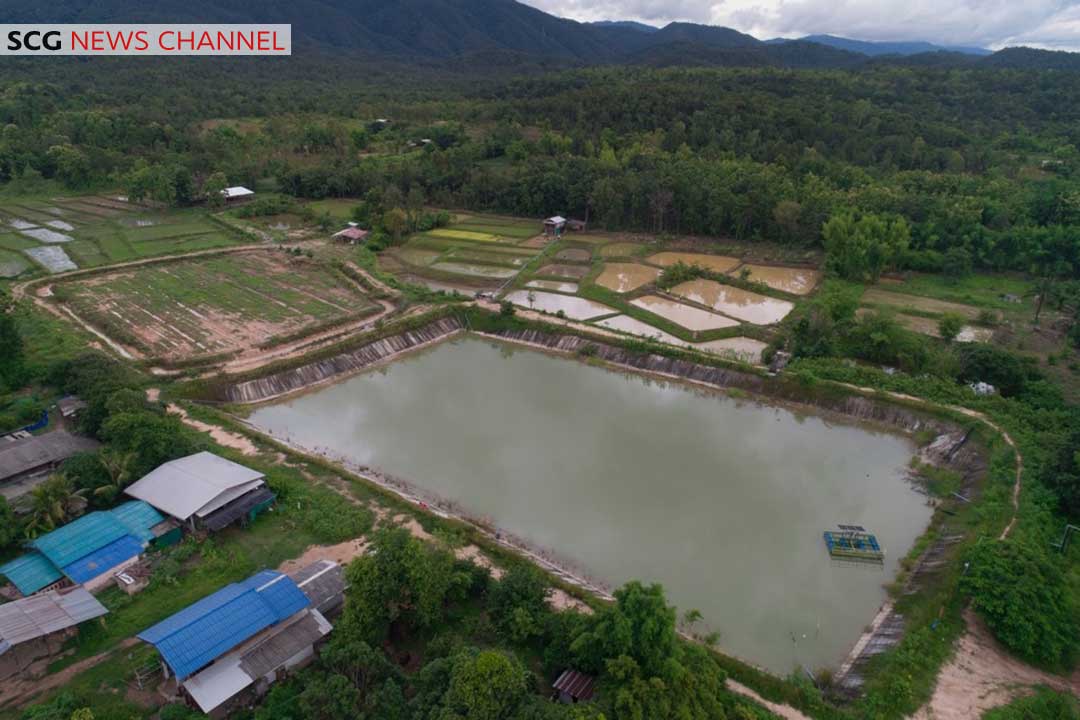
As a part of the community, SCG did not stand still. It teamed up with the relevant government agencies to alleviate the ongoing water shortage by listening to the community’s needs, providing resources, and excavating three water storage ponds for villagers and farmers in Ban Mae Tan: Tienchai Pond with a capacity of 100,000 cubic meters, Keng Pond with a capacity of 70,000 cubic meters, and New Pone with a capacity of 50,000 cubic meters.
Until the time the mine ceased activities, SCG and the community decided to put the potential of the mine, which spans 490 rai and has a depth of more than 200 meters, to use by turning it into a reservoir that can collect rainwater and water that rises from underground. This has led to the “Mae Tan Model,” a model for utilizing mine water to tackle long-term drought issues. Currently, the Mae Tan mine’s water supply has a capacity of 10 million cubic meters and an anticipated maximum water storage capacity of 50 million cubic meters.

SCG was responsible for excavating the Ban Mae Tan community’s New Pond and water wells. Water from the mine will be pumped up using floating solar technology, a solar-powered pumping system comprised of more than 520 solar panels placed on floating buoys in the mine’s aisles. The water then travels along a 10-inch, 2-kilometer pipeline to the New Pond and water wells of the Ban Mae Tan community. This is for the use and relief of drought-stricken villagers and farmers in Ban Mae Tan Moo 7 and 9 in Sandonkaew Subdistrict above the mine area. About 700 rai of agricultural land has benefited, and the incomes of 250 households have increased as a result of greater confidence in planning water management for agriculture.
Local people have incorporated traditional Lanna wisdom, such as the weir mining technique, into the storage ponds built by SCG to manage the community’s water. The water from the New Pond would run down the mining trough and onto the villagers’ crops. In some areas, a small water gate, also known as a “tang,” prevents water from flowing into the locals’ fields. The villagers in charge of water management will be represented by “kae mueang” or “kae fai,” to ensure that all houses receive water thoroughly and are rewarded with rice at the end of the harvest season.
“Before the dry season, some farmland was unfarmable. Since we have the local budget, the community welfare fund, and SCG support, we can buy land to construct a huge pond. SCG assisted in excavating the pond. Currently, nearly none of the farmland is abandoned. It is a good community improvement,” said Krishnaphan Tananchai, village head of Moo 9, Sandonkaew Subdistrict, discussed the benefits of New Pond.
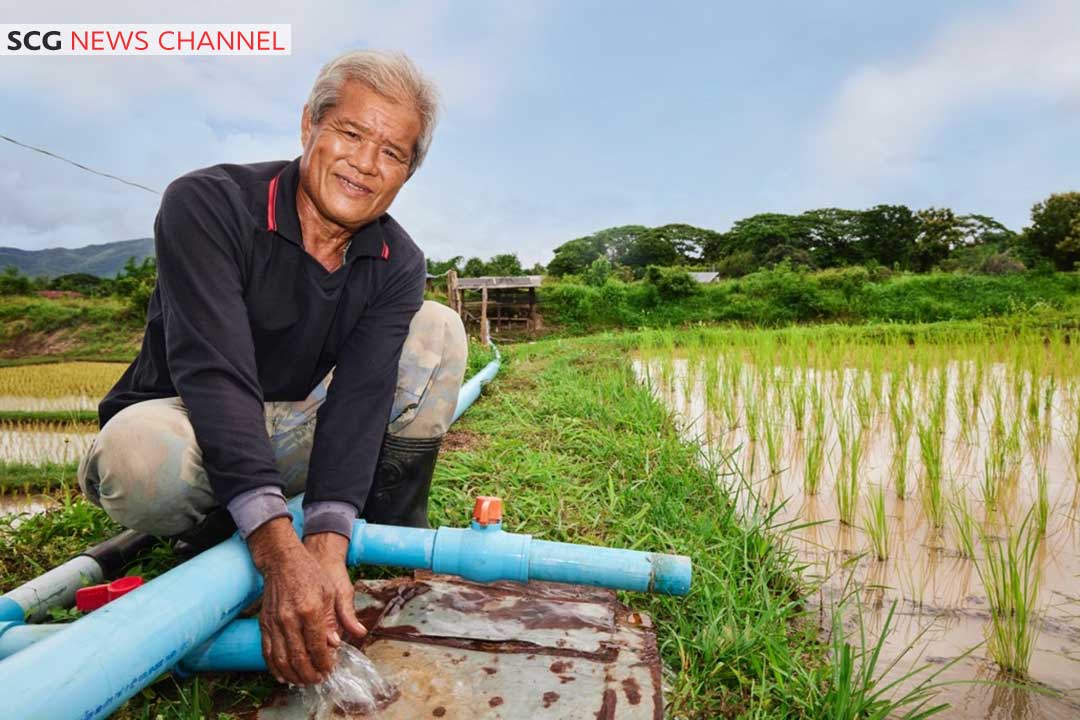
“I feel at ease that we do not need to worry about water. When water is required, we can simply switch the cutout valve and pump it from New Pond,” said Si Pootma, a 59-year-old farmer from Moo 9, Sandon Kaew Subdistrict, whose farmland adjacent to New Pond, reminisced about the convenience of having a water supply nearby.
SCG has not only collaborated with communities to create water resources for local residents, but has also transferred knowledge on water management and mapped the community’s waterways with the village headmen of Moo 7 and Moo 9 and villagers. This data will be used in water management planning for long-term community drought solutions.
The future of the Mae Tan mine is designed with the participation of all parties.
The “Mae Tan Model” water management, which involved diverting water from the Mae Tan mine to address the drought issues in the Sandonkaew subdistrict, is regarded as a role model for the use of the mine and the inspiration for the “Siriraj Model,” a water management strategy introduced by the Lampang governor named after Siriraj Municipality in the Sandonkaew Subdistrict, Mae Tha District, Lampang Province. The project aims to increase the distribution of water from the Mae Tan mine and other water sources to agricultural lands in the Mae Tha district of Lampang Province.
“Mae Tan Model gives birth to Siriraj Model. The minefields created by SCG are crucial. In the future, if the mine’s water reaches a capacity of 50 million cubic meters, which is considered a large reservoir, we plan to construct a water storage tower approximately 10 kilometers away from the Mae Tan mine as a station for diverting water from the Mae Tan mine to store it for distribution to distant villages. SCG is regarded as the host, the landowner who drives work. SCG has been 100% supportive,” said Sawang Theptao, Mayor of Siriraj District Municipality, referring to the public and private sectors collaborating to design the long-term Siriraj water management plan.
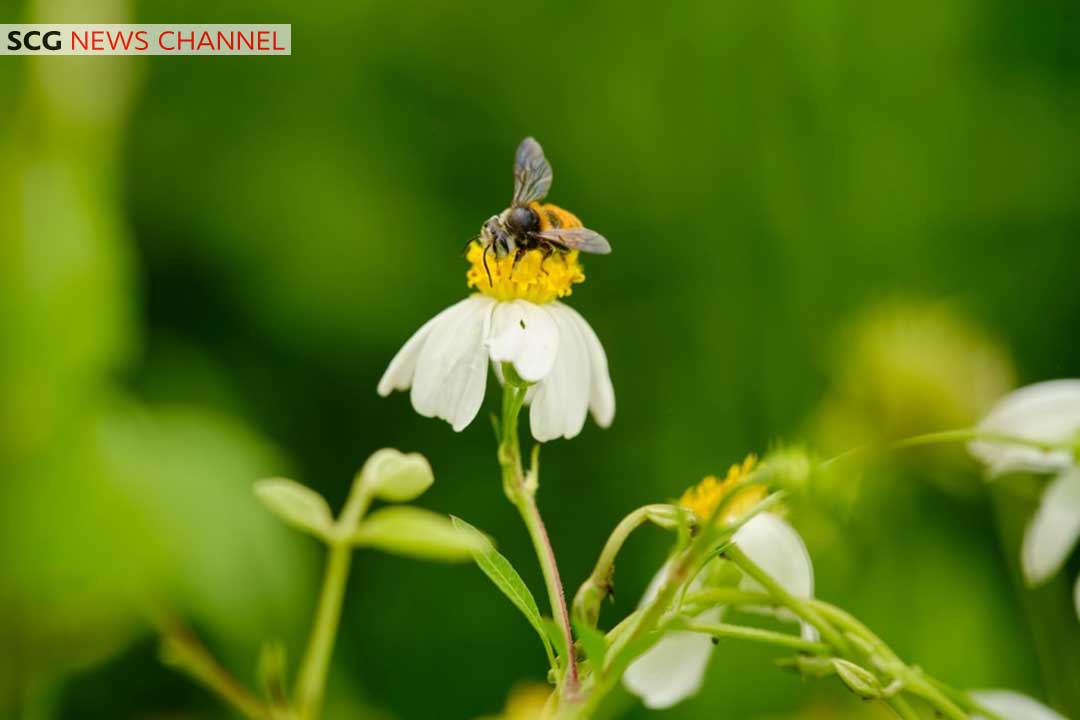
In addition to the water resources that will continue to benefit the villagers after the mine’s closure, SCG has established programs with locals and related organizations to design the use of post-closure areas to generate sustainable livelihoods for the community. This is comparable to the success of “Meang Lee Mee Rak,” a coal mine in Lamphun province, where SCG revitalized the area following the mine’s closure as the first in Thailand under the name “Mine Development Model Project by SCG for Community” in Lee District, Lamphun Province. It is situated on more than 250 rai of land for the community to use as a source of water for farming and drought relief through the participation of all sectors, as well as developing it into a tourist attraction and handing over ownership of the area to the Lamphun Provincial Administrative Organization to manage the area.
The shared future of the Mae Tan mine includes the improvement of areas surrounding the mine to become an ecotourism destination, the allocation of land for waterfront recreation and water activities, and the creation of geological and mining resources, which require the cooperation of all relevant sectors for the project’s success and sustainability.
“SCG must also consult with actual landowners such as the Forest Department, Lampang Provincial Industry, and local authorities over which areas will be handed over following restoration. Which organizations will propose to develop the area? In other words, SCG has closed the mine and should not simply abandon it. We should take care of it going forward,” Booncherd Klinsokum, deputy manager of Mae Tan mine, summed up the preparations to return the Mae Tan mine area to the landlord.
Greenery returned, as did the villagers’ bright smiles and hearty laughter from the area around the mine. And the growing shared ownership of the land between SCG and the surrounding villagers is a result of the mine’s closure, where the focus is on people.
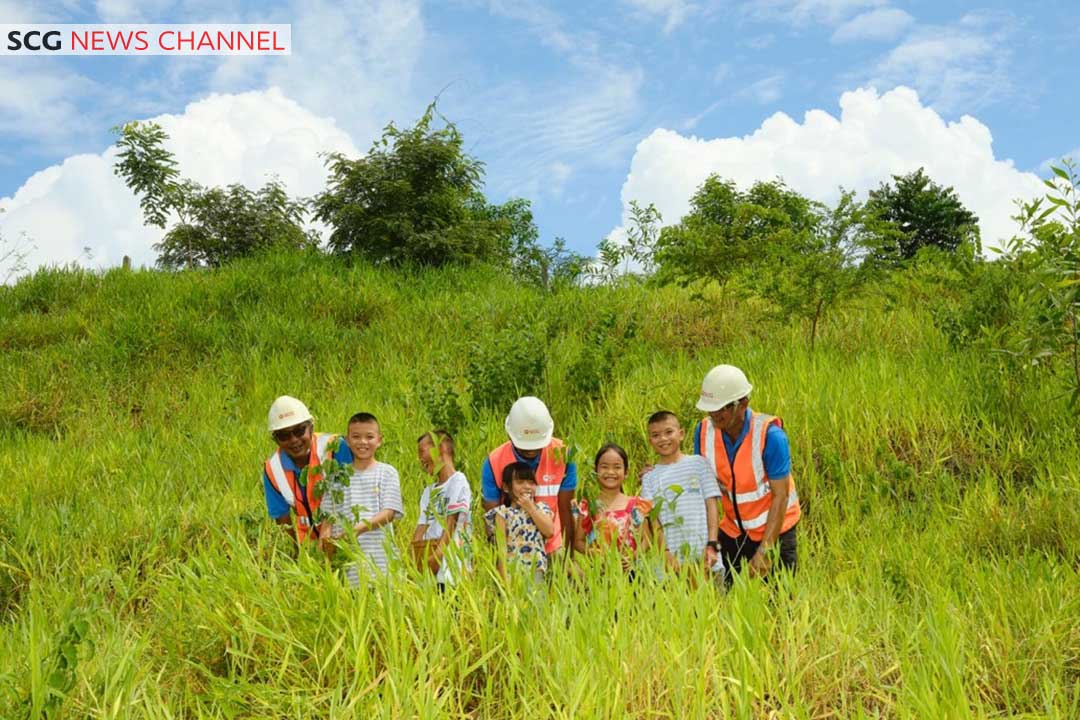
SCG has applied ESG 4 Plus principles to rehabilitate and enhance the mining site and water management at the Mae Tan mine. Environmentally, it minimizes greenhouse gas emissions through environmentally friendly technology and restoring forests to their natural state. In terms of the social dimension, it reduces inequalities through employment and contributes to the comprehensive water allocation to farmers. For the corporate governance aspect, it collaborates with the community, government agencies, and other organizations to drive programs that benefit the locals and to conduct business fairly and transparently.
These efforts are a part of the arduous journey moving toward the next step, in which SCG, villagers living close to the mine, and the relevant agencies will collaborate to plan the management of the Mae Tan area in line with the actual needs of the community after the mine closure. This endeavor seeks to sustainably improve the quality of life of the people and society surrounding the mine in line with the SCG’s promise of “Passion for Better.”
Published on: Jan 25, 2023